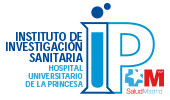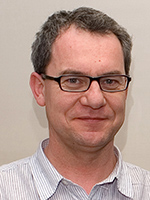Animal models of inflammatory diseases and tissue remodelling
Lipid mediators such as prostanoids or oxidised compounds derived from cholesterol play an essential role in modulating the inflammatory process associated with many diseases, such as arthritis, atherosclerosis or cancer. The prostanoid family includes prostaglandins (PGs) and thromboxanes (TXs), synthesised through arachidonic acid through cyclooxygenase action (COX-1 y COX-2) and various PG synthases.
On the other hand, liver x receptors (LXRs) and their ligands, including oxidised cholesterol compounds, play a regulating role that is central in lipid uptake, metabolism and output through their properties as transcriptional regulators of gene expression. As well as their role in lipid metabolism, LXRs have been found to modulate inflammatory and immune response by regulating the expression of genes that are essential for activating immune cells.
The main aims of our research include studying the molecular mechanisms by which LXR ligands and prostanoids exercise their actions on immune response, and their involvement in pathologies with inflammatory processes, using cell and animal models. These studies include an analysis of the effects of prostanoids and ligands on LXRs, and their interconnections, through their actions in cell signalling and transcriptional activation of gene expression in various cell types, including T lymphocytes and macrophages.
We are currently researching the differential effect of prostanoids such as PGF2α or cyclopentenones in the activation of macrophages and T cells, as positive or negative regulators of the function of these cells. Our research is also centred around determining the influence of LXR ligands on modulating the function of T cells and macrophages, with particular attention on their key role as regulators of gene expression in these cells and their influence on different parameters of cell activation.
Advances in knowledge of the molecular and cellular bases of the action of LXR ligands and prostanoids in inflammation and immune response are particularly relevant given the growing interest in the influence of inflammatory processes in a multitude of pathologies, and in the possibility of therapeutic intervention modulating the action of those agents.
Team members
|
Miguel Ángel Íñiguez Peña Universidad Autónoma de Madrid-Molecular Biology Institute |
Other team members:
|
Díaz-Muñoz MD, Osma-García IC, Iñiguez MA, Fresno M. Cyclooxygenase-2 Deficiency in Macrophages Leads to Defective p110 gamma PI3K Signaling and Impairs Cell Adhesion and Migration. J Immunol 2013. 191: 395-406. FI: 5.362(Q1). PMID: 23733875. DOI: 10.4049/jimmunol.1202002.
Diaz-Munoz, Manuel D., Osma-Garcia, Ines C., Fresno, Manuel, Iniguez, Miguel A. Involvement of PGE(2) and the cAMP signalling pathway in the up-regulation of COX-2 and mPGES-1 expression in LPS-activated macrophages. Biochem. J. 2012. 443: 451-461. FI: 4.654(Q1). PMID: 22268508. DOI: 10.1042/BJ20111052.
Donnini S, Finetti F, Terzuoli E, Giachetti A, Iñiguez MA, Hanaka H, Fresno M, Rådmark O, Ziche M. EGFR signaling upregulates expression of microsomal prostaglandin E synthase-1 in cancer cells leading to enhanced tumorigenicity. ONCOGENE 2012. 31: 3457-3466. FI: 7.357(Q1). PMID: 22081067. DOI: 10.1038/onc.2011.503.
Díaz-Muñoz MD, Osma-García IC, Cacheiro-Llaguno C, Fresno M, Iñiguez MA. Coordinated up-regulation of cyclooxygenase-2 and microsomal prostaglandin E synthase 1 transcription by nuclear factor kappa B and early growth response-1 in macrophages. Cell. Signal. 2010. 22: 1427-1436. FI: 4.243(Q2). PMID: 20546888. DOI: 10.1016/j.cellsig.2010.05.011.
Iñiguez MA, Punzón C, Cacheiro-Llaguno C, Díaz-Muñoz MD, Duque J, Cuberes R, Alvarez I, Andrés EM, Buxens J, Buschmann H, Vela JM, Fresno M. Cyclooxygenase-independent inhibitory effects on T cell activation of novel 4,5-dihydro-3 trifluoromethyl pyrazole cyclooxygenase-2 inhibitors. Int. Immunopharmacol. 2010. 10: 1295-1304. FI: 2.325(Q3). PMID: 20709632. DOI: 10.1016/j.intimp.2010.07.013.


 Group leader:
Group leader:






